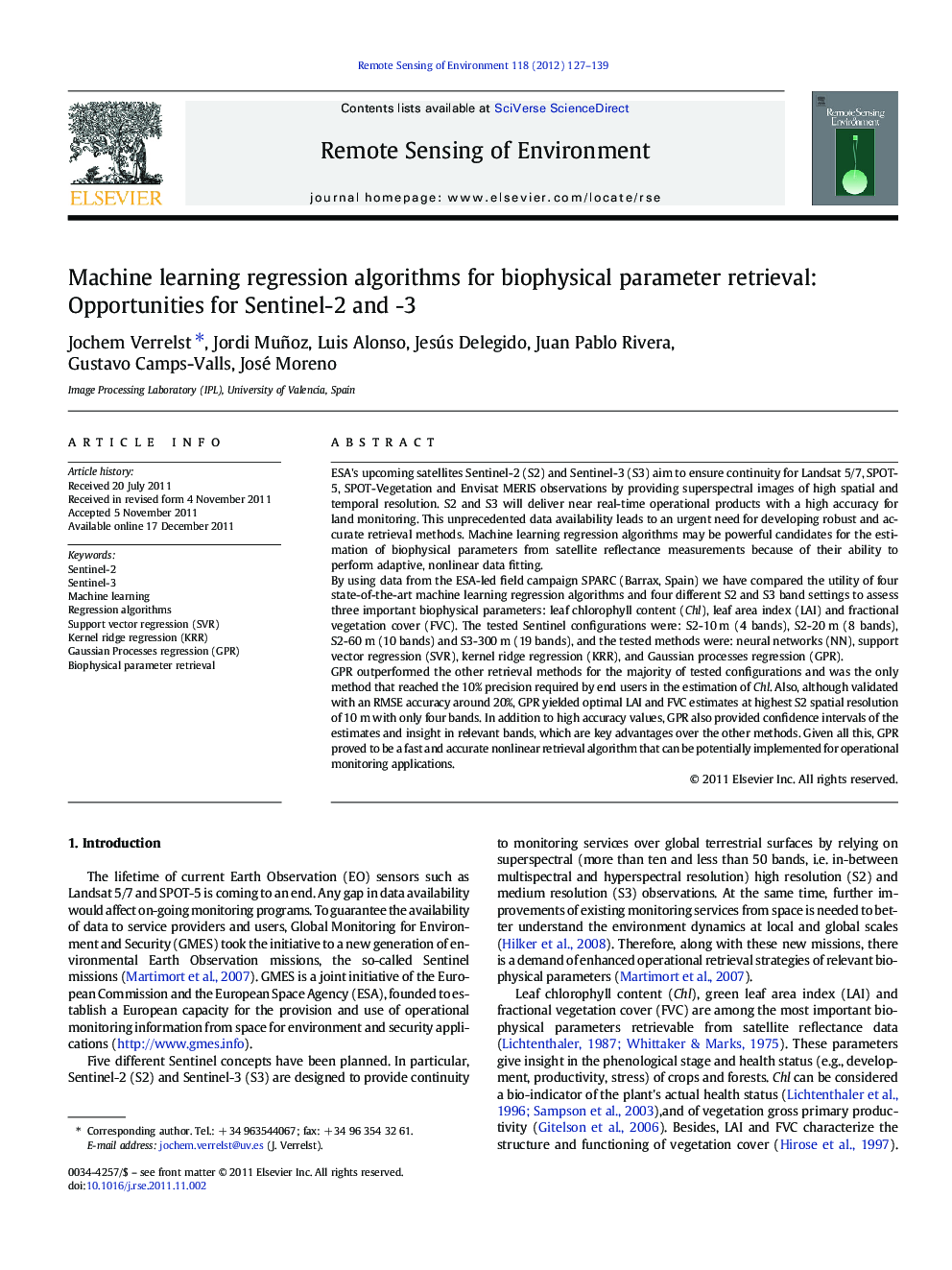| کد مقاله | کد نشریه | سال انتشار | مقاله انگلیسی | نسخه تمام متن |
|---|---|---|---|---|
| 4459332 | 1621282 | 2012 | 13 صفحه PDF | دانلود رایگان |

ESA's upcoming satellites Sentinel-2 (S2) and Sentinel-3 (S3) aim to ensure continuity for Landsat 5/7, SPOT-5, SPOT-Vegetation and Envisat MERIS observations by providing superspectral images of high spatial and temporal resolution. S2 and S3 will deliver near real-time operational products with a high accuracy for land monitoring. This unprecedented data availability leads to an urgent need for developing robust and accurate retrieval methods. Machine learning regression algorithms may be powerful candidates for the estimation of biophysical parameters from satellite reflectance measurements because of their ability to perform adaptive, nonlinear data fitting.By using data from the ESA-led field campaign SPARC (Barrax, Spain) we have compared the utility of four state-of-the-art machine learning regression algorithms and four different S2 and S3 band settings to assess three important biophysical parameters: leaf chlorophyll content (Chl), leaf area index (LAI) and fractional vegetation cover (FVC). The tested Sentinel configurations were: S2-10 m (4 bands), S2-20 m (8 bands), S2-60 m (10 bands) and S3-300 m (19 bands), and the tested methods were: neural networks (NN), support vector regression (SVR), kernel ridge regression (KRR), and Gaussian processes regression (GPR).GPR outperformed the other retrieval methods for the majority of tested configurations and was the only method that reached the 10% precision required by end users in the estimation of Chl. Also, although validated with an RMSE accuracy around 20%, GPR yielded optimal LAI and FVC estimates at highest S2 spatial resolution of 10 m with only four bands. In addition to high accuracy values, GPR also provided confidence intervals of the estimates and insight in relevant bands, which are key advantages over the other methods. Given all this, GPR proved to be a fast and accurate nonlinear retrieval algorithm that can be potentially implemented for operational monitoring applications.
► Sentinel-2 and -3 aim to ensure continuity of operational land monitoring products.
► Machine learning algorithms are promising for biophysical parameters retrieval.
► Gaussian Processes regression (GPR) is evaluated as best performing algorithm.
► GPR reached accuracies superior to the by GMES requested threshold of 10%.
► Along with estimates, GPR provides insight in relevant bands and confidence values.
Journal: Remote Sensing of Environment - Volume 118, 15 March 2012, Pages 127–139